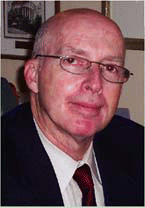In the procedure, the anterior commissure laryngoplasty consisted of a cold instrument lysis of the web. Subsequently an inferiorly based microflap composed of papillomatous epithelium was dissected.
Explore This Issue
May 2007Dr. Akst said that his surgical advancement involved the rotation of the microflap by suture stabilizing it to the anterior commissure tendon.
The papillomatous disease not associated with the microflap was treated with an angiolytic laser after the glottal aperture was lengthened, he said. A second-stage laser procedure was done to treat the residual disease in the microflap. Microlaryngoscopy and telescopic videostroboscopy were used to assess outcomes.
As the laser lyses the webbing, doctors can view those structures beneath the web itself, Dr. Akst said. The microflap prevents synechia reformation during re-epithelialization. The length of glottal aperture is restored. The remaining disease on microflap itself can be treated with staged angiolysis 6 to 10 weeks later.
Case Studies
In the prospective, nonrandomized case series reported at the meeting, Dr. Akst said that in all five patients the glottal length was improved in all patients by an average of 5 mm. The improved exposure allowed all patients to progress to office-based management, he said.
Patients were selected who presented with substantial anterior commissure web formation with recurrent respiratory papillomatosis on its undersurface, he said.
Overall, we found this to be a very effective technique. It capitalizes on the presence of the redundant papillomatous tissue, he explained. The microflap can actually be raised and put into position to prevent restenosis. Therefore, it is not limited by scar tissue like other mucosal advancement flaps. You are not using the scar; you are using the disease itself and then involuting that disease in the second stage. Sometimes that takes place in the operating room, but as you have seen here, sometimes it can be accomplished in the office.
He added, Given that many of these patients have failed office-based therapy or are not candidates for office-based therapy because we can’t see the disease in the subcordal and subglottic regions, we don’t feel that this is in any way a negative to have two separate operative microendoscopies in something like this.
Another advantage of this technique is that it can be adapted to any particular surgical preference that anyone might have for treatment of papilloma, Dr. Akst said. He said that the procedure does not increase the number of operating room treatments. He added that the general paradigm for the correction of the webbing requires two operative microlaryngoscopies followed by transition to office-based care.

Leave a Reply